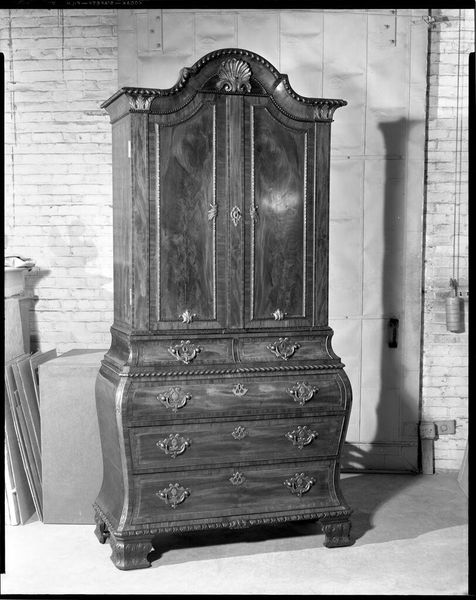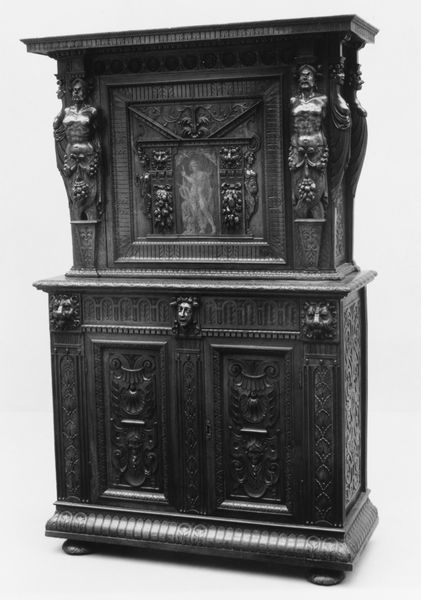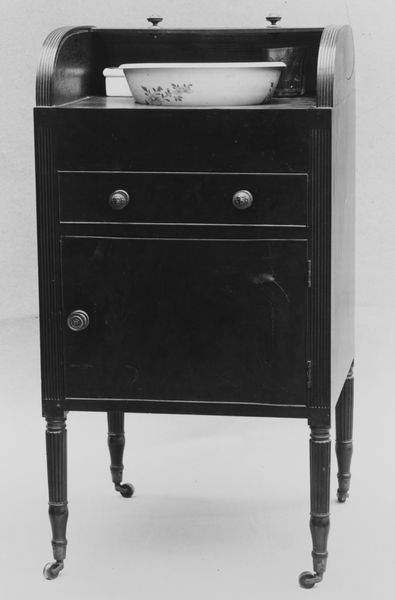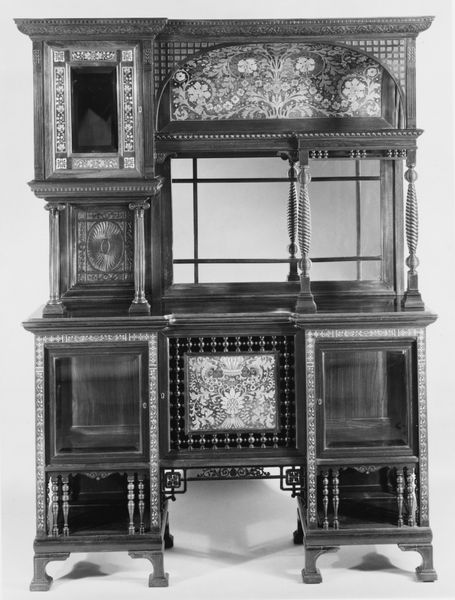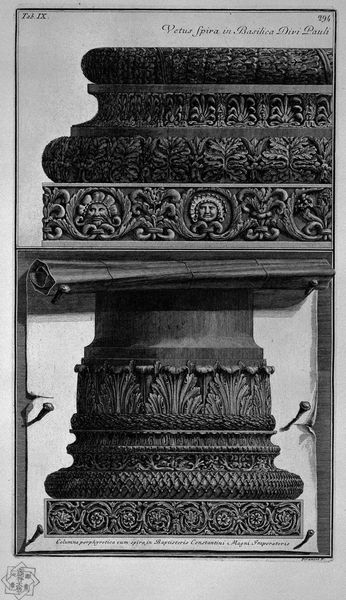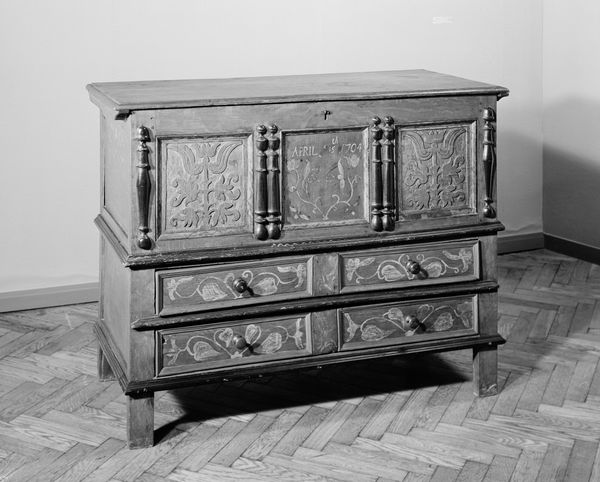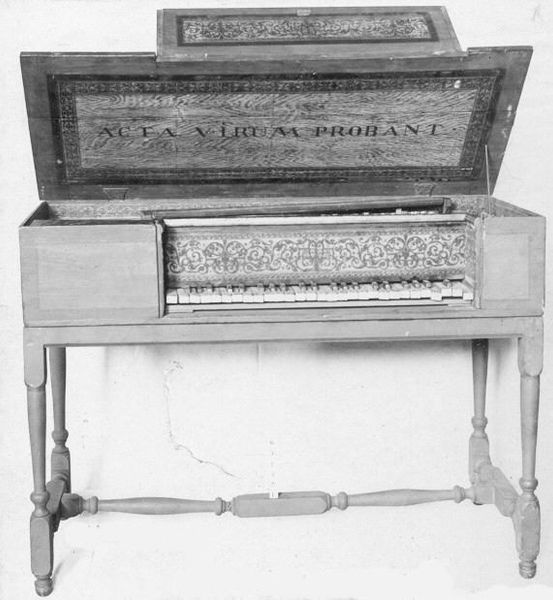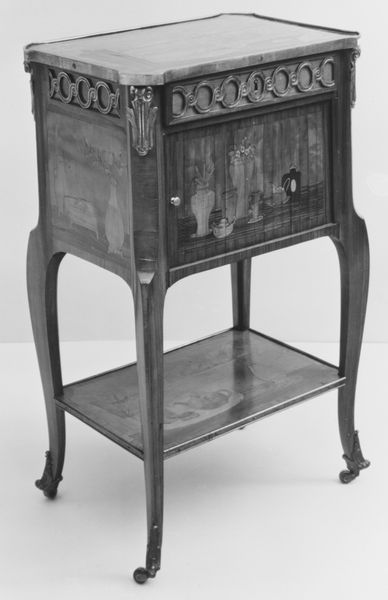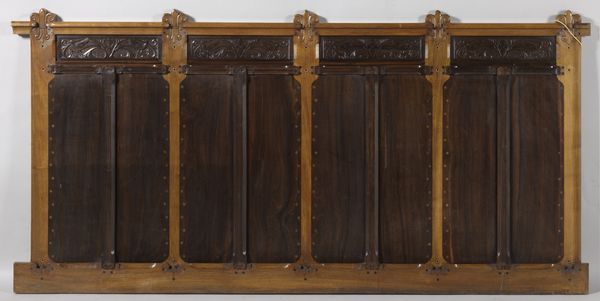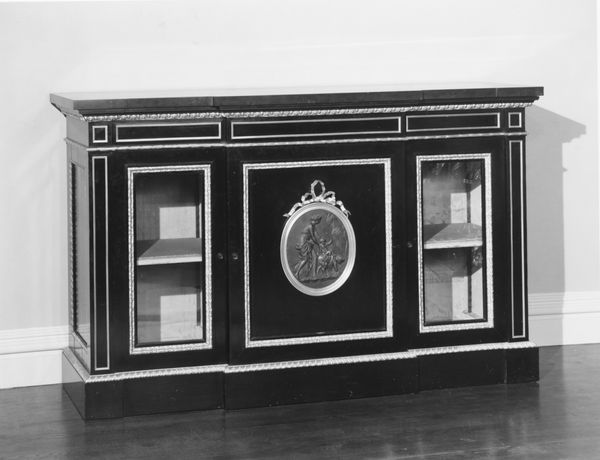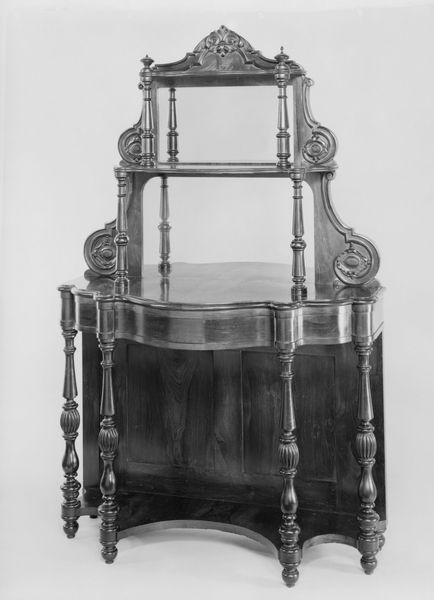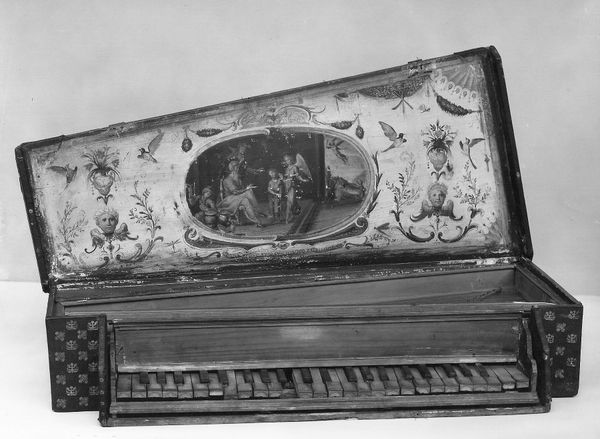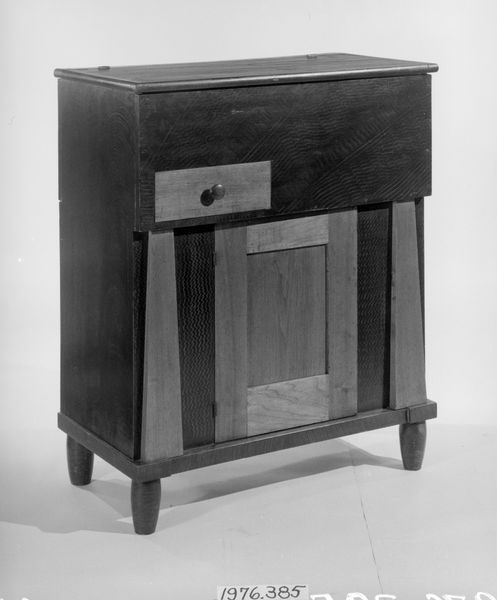
carving, sculpture, wood
#
neoclacissism
#
wood texture
#
carving
#
sculpture
#
furniture
#
sculpture
#
wooden texture
#
united-states
#
wood
#
decorative-art
Dimensions: 55 3/8 x 41 1/2 x 21 3/4 in. (140.7 x 105.4 x 55.2 cm)
Copyright: Public Domain
Editor: This is the Tambour Desk, crafted between 1802 and 1805. It's currently housed at the Metropolitan Museum of Art. I'm really drawn to the textures and geometric organization within this sculpture of wood. What historical context informed its design? Curator: The Tambour Desk reflects the Federal style, which was popular in the United States after the American Revolution and heavily inspired by Neoclassicism in Europe. Think of it as the architectural language of a new nation striving to establish its identity on the world stage. Notice the rectilinear structure, and the symmetrical arrangement. Do you think that says anything about the social climate at that time? Editor: Well, given the values of the early American Republic, maybe this structured look suggests a desire for order and rationalism? In reaction to the perceived chaos of the monarchy they just overthrew? Curator: Precisely. Federal furniture like this often incorporated classical motifs adapted for American tastes. But, objects like these also functioned within a complex social hierarchy. Fine furniture signified status and refinement. Do you consider that furniture could be considered political? Editor: That's really interesting. The act of owning such a beautifully crafted object was likely restricted to a specific elite, reflecting—and perpetuating—existing social and economic disparities in this "new republic." It almost makes me reconsider the seemingly straightforward, orderly appearance. Curator: And consider the labor required to produce such an item. Whose hands actually shaped the wood? Reflecting on art is also about contemplating the human labor it involved. What new questions does considering its social role bring to mind for you? Editor: It makes me wonder about the artisans. Understanding who made these objects and the social and political conditions of their labor provides a crucial counterpoint to the celebratory narrative we often find in museums. It humanizes the process and reminds us that beauty doesn't exist in a vacuum.
Comments
No comments
Be the first to comment and join the conversation on the ultimate creative platform.

